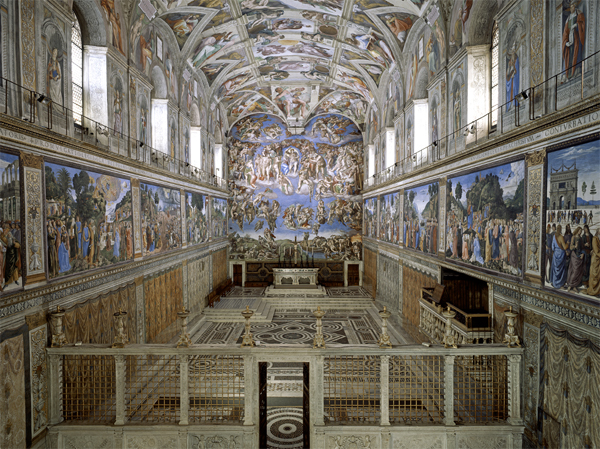
Sistine Chapel ceiling opens to public on November 01, 1512
Sistine Chapel ceiling opens to public: The ceiling of the Sistine Chapel in Rome, one of Italian artist Michelangelo’s finest works, is exhibited to the public for the first time.
Michelangelo Buonarroti, the greatest of the Italian Renaissance artists, was born in the small village of Caprese in 1475. The son of a government administrator, he grew up in Florence, a center of the early Renaissance movement, and became an artist’s apprentice at age 13. Demonstrating obvious talent, he was taken under the wing of Lorenzo de’ Medici, the ruler of the Florentine republic and a great patron of the arts. After demonstrating his mastery of sculpture in such works as the Pieta (1498) and David (1504), he was called to Rome in 1508 to paint the ceiling of the Sistine Chapel—the chief consecrated space in the Vatican.
Michelangelo’s epic ceiling frescoes, which took several years to complete, are among his most memorable works. Central in a complex system of decoration featuring numerous figures are nine panels devoted to biblical world history. The most famous of these is The Creation of Adam, a painting in which the arms of God and Adam are stretching toward each other. In 1512, Michelangelo completed the work.
After 15 years as an architect in Florence, Michelangelo returned to Rome in 1534, where he would work and live for the rest of his life. That year saw his painting of the The Last Judgment on the wall above the altar in the Sistine Chapel for Pope Paul III. The massive painting depicts Christ’s damnation of sinners and blessing of the virtuous and is regarded as a masterpiece of early Mannerism.
Michelangelo worked until his death in 1564 at the age of 88. In addition to his major artistic works, he produced numerous other sculptures, frescoes, architectural designs, and drawings, many of which are unfinished and some of which are lost. In his lifetime, he was celebrated as Europe’s greatest living artist, and today he is held up as one of the greatest artists of all time, as exalted in the visual arts as William Shakespeare is in literature or Ludwig van Beethoven is in music.
History Channel / Wikipedia / Encyclopedia Britannica /Musei Vaticani.va / Live Science / Smithsonian
/ Sistine Chapel (YouTube search) 
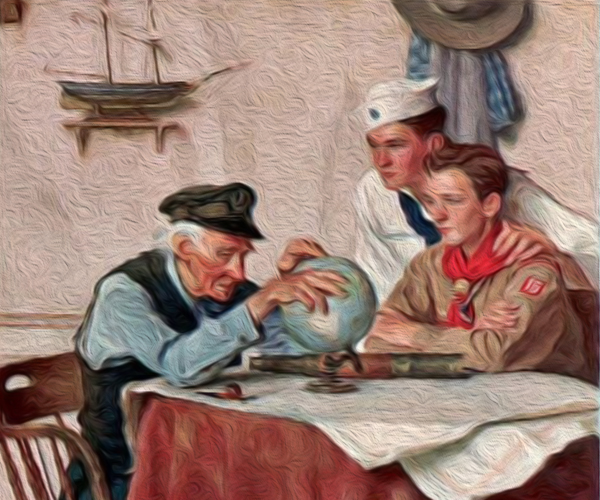
Understanding Military Terminology - Migrant
(DOD) A person who
(1) belongs to a normally migratory culture who may cross national boundaries, or
(2) has fled his or her native country for economic reasons rather than fear of political or ethnic persecution.
Joint Publications (JP 3-29) Foreign Humanitarian Assistance - Defense Technical)
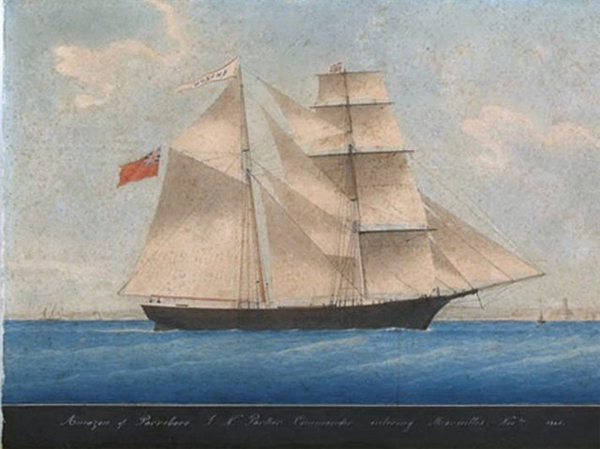
The Old Salt’s Corner
“Tales of Legendary Ghost Ships”
Legend of The Mary Celeste
On November 7, 1872, the 282-ton brigantine Mary Celeste set sail from New York Harbor on its way to Genoa, Italy. On board were the ship’s captain, Benjamin S. Briggs, his wife, Sarah, and their 2-year-old daughter, Sophia, along with eight crewmembers. Less than a month later, on December 5, a passing British ship called Dei Gratia spotted Mary Celeste at full sail and adrift about 400 miles east of the Azores, with no sign of the captain, his family or any of the crew. Aside from several feet of water in the hold and a missing lifeboat, the ship was undamaged and loaded with six months’ worth of food and water.
Mary Celeste had a shadowy past. Originally christened Amazon, it was given a new name after a series of mishaps (including the sudden illness and death of its first captain and a collision with another ship in the English Channel). An investigation into whether to grant payment by its insurers to the Dei Gratia’s crew for salvaging the “ghost ship” found no evidence of foul play.
Mary Celeste would sail under different owners for 12 years before its last captain deliberately ran it aground in Haiti as part of an attempted insurance fraud. In 2001, best-selling novelist and adventurer Clive Cussler claimed to have found the wreck of Mary Celeste, but later analysis of the timbers retrieved from the ship he found showed the wood was still living at least a decade after Mary Celeste sank.
Meanwhile, one of the most famous maritime mysteries in history endures: Why would an experienced captain such as Briggs, or his sailors, abandon a perfectly sound ship? Theories over the years have ranged from mutiny and pirate attack to assault by giant octopus or sea monster, while the more scientifically minded proposed an explosion caused by fumes from the 1,700 barrels of crude alcohol in the ship’s hold.
Sir Arthur Conan Doyle even weighed in with a short story published in 1884, in which the inhabitants of the ghost ship fell victim to an ex-slave seeking vengeance. On the less-sensationalized end, an investigation chronicled in the 2007 documentary “The True Story of the Mary Celeste” was able to offer no definite conclusion, but did suggest a scenario in which a faulty chronometer, rough seas and a clogged onboard pump could have led Briggs to order the ship abandoned shortly after sighting land on November 25, 1872. According to the last entry in the ship’s log book, made that morning, Mary Celeste was within sight of the Azores island of Santa Maria, some 500 miles from where the Dei Gratia would find it nine days later.
History Channel / Wikipedia
/ Smithsonian - VIDEO: The True Story of the Mary Celeste 

“I’m Just Sayin”
“In psychophysics, proposed relationship between the magnitude of a physical stimulus and its perceived intensity or strength.”
~ Stevens' power law.

“Thought for the Day”
“Our most basic common link
is that we all inhabit this small planet.
We all breathe the same air.
We all cherish our children’s future.
And we are all mortal.”
~ John F. Kennedy

“What I Have Learned”
“Never:
Let anyone determine yourself worth.
Speak without listening.
Give up before you’re ready.
Forget to breathe.
Settle for less than you deserve.
Dim your sparkle.
Complicate what you can simplify.
Make promises you can’t keep.
Believe it’s too late to begin.”
~ Anonymous

Bizarre News (we couldn’t make up stuff this good – real news story)
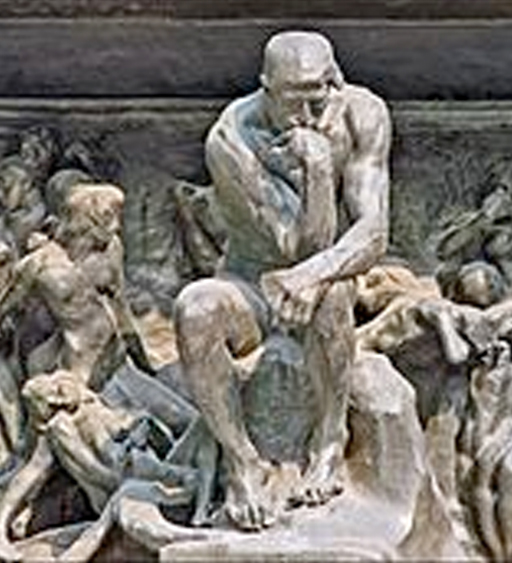
Man who had near-death experience explains what happens when 'bad souls' die
The man was rescued by lifeguards and resuscitated after nearly drowning
It's a subject of eternal fascination and perhaps, in spite of all of mankind's scientific advancements, one of life's greatest mysteries.
What happens after death is a topic everyone has an opinion on - and it's an experience which a few people claim they've had.
One man has explained how by being medically “dead” for a few moments, he not only saw there was an afterlife, but also what happened to “good” and “bad” people.
Here's what happened.
“When you die you'll know you're dead because one of two things will happen, you'll either be travelling through what will look like a tunnel of light shooting all around you or you'll be in a place that comes with nothing but fear and darkness all around.”
“This place has no light, in this place you'll know you're in hell and that you'll be there for all eternity.”
“No thoughts except for ones knowing you are a bad person haunt your mind. The darkness leaves you in a terrified paralysis where you can't see anything except for the vast dark emptiness of a hellish universe with no stars, no light, no anything, not even thought.”
“I wouldn't wish my worse enemy to go to this place.”
“Now, as for the tunnel, it's not really a tunnel, from the outside it looks like a glowing cord that is being slowly whipped around in space and all the light shooting around inside are good souls going in all the same direction to a better place.”
“I saw this glowing cord because i was guided to it and I was fortunate enough to see something so amazing.”
Of course, one recurring counter-argument to people's “afterlife” stories - especially in the case of drowning - cite the fact that the brain hallucinates when starved of oxygen.
Many people still believe these accounts though, and the majority of responses to the man's story said how comforting and reassuring they found his words.
Mirror (08/24/2017) 
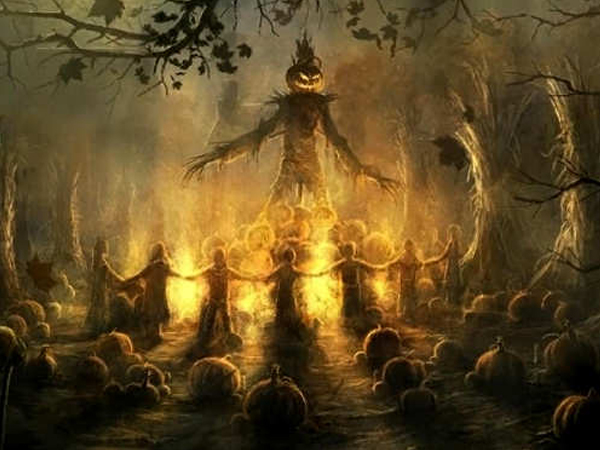
Mr. Answer Man Please Tell Us: Burning Halloween Questions
WHO STARTED HALLOWEEN?
Halloween got its start thousands of years ago, and we can thank the Celts for getting things going. They celebrated a holiday known as Samhain on October 31, one of the four “quarter days” of the calendar, and possibly the Celtic New Year. They believed that the dead could walk the earth on Samhain and cause mischief but, on the plus side, their presence also made it easier for the Druid priests to predict the future.
WHY DO WE WEAR COSTUMES?
On Samhain, a big bonfire would be built and sacrifices made to the dead, while the common folk would dress up in animal skins and try to tell their own fortunes (probably with the same success rate as the “professionals”). The costumes, Halloween's most enduring tradition, were donned either to calm the spirits or to blend in with them, so as to not incur their wrath.
HOW DID SAMHAIN BECOME HALLOWEEN?
Starting in 43 CE, the Roman war machine rolled through Britain and conquered a large chunk of the Celtic population. But the Romans, always the master conquerors, cleverly blended two of their own holidays with the Celtic Samhain to make the transition to Roman rule more seamless. One holiday was a celebration of the dead (easy enough to mix with Samhain) and the other was a celebration of the Pomona, the goddess of fruit and tress, where, supposedly, the tradition of bobbing for apples takes root.
When Christianity arrived on the scene, the hodgepodge holiday again was forced to change. Like the previous blending, the Christians incorporated their own holidays into the Samhain tradition. November 1 became All-hallow's, a day to celebrate the saints and martyrs, and October 31 became All-hallow's Even (“Even” being short for “evening”, and providing the “n” in “Halloween”). Through the magic of etymology, All-hallow's Even became Halloween.
HOW DID WE GET FROM BONFIRES AND DEAD SAINTS TO PLASTIC MASKS AND CANDY CORN?
Puritans in New England suppressed the superstitious holiday. In the South, however, where religious piety was less important, Halloween was celebrated in much the same way it was in Europe. But a great tide of immigration in the late 1800s brought a new life to the holiday, and no amount of piety could contain it.
Through the years, the “spookiness” of Halloween was replaced with a more wholesome community feel, out of which grew trick-or-treating and, as towns celebrated together, stripped any religious significance away. Finally, after many thousands of years and many cultural modifications, we arrived at a holiday involving witches, costumes, candy, mischief, the deceased and pumpkins.
WHY PUMPKINS?
Making vegetable lanterns can be traced back to Great Britain and Ireland, where carving turnips, beets and potatoes had been a fall tradition for many centuries. According to an Irish myth, a man named Stingy Jack once had a drink with the Devil and, when he didn't want to pay for it, he convinced the Devil to turn into a coin. However, Stingy Jack lived up to his name and pocketed the coin next to a cross, keeping the Devil locked in a monetary state until he struck a deal with Jack to leave him alone and not claim his soul for Hell upon his death. When Jack did die, Heaven rejected him and, true to his word, so did the Devil.
As punishment for his trickery, the Devil sent Jack out to wander the earth forever with a single coal in a hollowed-out turnip to light his way. To Irish children he was Jack of the Lantern or, as the Irish are wont to do when confronted with an “of the”, Jack O'Lantern.
But Jack-o'-Lanterns were not a part of Halloween celebrations in Britain; it would take a new continent to cement that tradition. The first mention of a Jack-o'-Lantern being part of a Halloween celebration comes from a Canadian paper which, in 1866, wrote, “The old time custom of keeping up Hallowe'en was not forgotten last night by the youngsters of the city. They had their maskings and their merry-makings, and perambulated the streets after dark in a way which was no doubt amusing to themselves. There was a great sacrifice of pumpkins from which to make transparent heads and face, lighted up by the unfailing two inches of tallow candle.”
WHY DID PUMPKINS BEAT OUT TURNIPS, BEETS AND POTATOES?
Pumpkins abounded in America and were much better for carving and illuminating than any of the aforementioned veggies. We can assume the tradition of smashing pumpkins originated very soon after the carved pumpkin entered the Halloween celebration in the late 1800s.
WHERE DOES CANDY CORN COME FROM?
Nobody knows who invented candy corn, but we do know it began to appear in the 1880s, and we know the first company to make it commercially was the Wunderle Candy Company of Philadelphia. Soon after, the Goelitz Confectionery Company began production of candy corn in Cincinnati in 1898. The process at first was daunting: a candy blend was mixed up, heated and then poured by hand into molds. Each mold needed three separate pours to achieve the tri-color glory that is candy corn. Today the process is mechanized and the tri-color composition isn't nearly as impressive as it was to the people of the 19th century, but Goelitz has never changed the recipe and they continue to make the candy to this day. The Goelitz Confectionery Company even went on to invent another fairly popular candy a few decades later, although they had to change the company name to do so. Today they are known as Jelly Belly.
History Channel
• Library of Congress
• Live Science
• Mental Floss
• Pumpkin Patches and More.org
• Quara
• Wikipedia


NAVSPEAK aka U.S. Navy Slang
Q: (1) The BEQ [Bachelor Enlisted Quarters] / Unaccompanied military personnel housing.
(2) The Quartermaster rating.
Quack: Hospital Corpsman
Quadball: Any sailor with a 0000 NEC. See “Quadzip:” below.
Quadzip: Four numeral zero's in a row. Example: 100007 would be read aloud as “one quadzip seven”. Also refers to sailors who have yet to attend any schools that assign NEC (Navy Enlisted Classification) codes upon graduation. The untrained sailors have a quad zip NEC of 0000.


Just for you MARINE
Shove Of: To leave the vicinity, from the naval term meaning to push a boat off the shore or pier.
Shower Shoes: Pair of rubber sandals issued to recruits to prevent infections from the use of community or shared showers. See also Jesus shoes. Also sometimes used as a facetious, almost-always joking pejorative term for new Marines. That is to say that they're so new that they don't even rate to be called “boots”.
Sick bay: Infirmary or other medical facility aboard ship, can also refer to aid stations ashore. See also Battalion Aid Station (BAS).
Sick Call: Daily period when routine ailments are treated at sick bay..
Sick Call Commando: Person who constantly finds medical reasons to avoid work, may suffer from a factitious disorder such as hypochondriasis, Munchausen syndrome, or malingering. More commonly referred to as sickbay commando.

Naval Aviation Squadron Nicknames
VAW-113 - “Black Eagles”
CVW-2 Naval Air Station Point Mugu, Naval Air Station Point Mugu, Ventura County, near Oxnard, California - Established April 20, 1967

Where Did That Saying Come From?

“Trick or treat?” Meaning: The ultimatum given by children who call on houses to solicit gifts at Hallowe'en.
There could hardly be a better example of the way that language and traditions migrate over time and across different cultures than trick or treating. This is well-known to be an American tradition, but its origins lie in medieval Europe.
There are myriad Christian and pagan rituals and celebrations that have taken place on or about the 1st of November each year. These occurred in virtually every English-speaking and/or Christian country. They have evolved and merged over the centuries and continue to do so. Common features of these traditions are - asking for food, dressing in disguise and a connection to the spirits of the deceased.
The language of these traditions is heavily influenced by the naming of days in the Christian calendar. The central date of the rituals that herald the beginning of winter is the 1st of November, called All Saints Day or All Hallows Day. The following day is All Souls Day and the 31st of October is All Hallows Eve - shortened to Hallowe'en (that is, the evening before All Hallows Day).
The practice of souling - going from door to door on or about All Souls Day to solicit gifts of food in return for prayers for the dead - evolved from a pagan ritual that was practiced all over Europe, possibly as early as the 10th century. As a Christian tradition it goes back to at least the 14th century, when it is mentioned by Chaucer. It is still commonplace in many Catholic countries, notably Ireland, where soul-cakes are left out for the departed. The first reference to the practice under that name in England is John Brand's Popular Antiquities of Great Britain, 1779:
“On All Saints Day, the poor people go from parish to parish a Souling, as they call it.”
The tradition has altered so that it is now children, usually dressed in disguise, who go about asking for gifts around the beginning of November. Some examples of this are from:
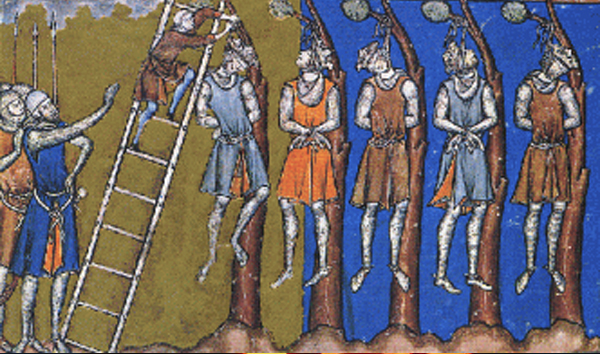
England, where we have requests for 'a penny for the guy'. This derives from the bonfire celebrations that began to celebrate the thwarting of the Gunpowder Plot in 1605. Guy Fawkes was the explosives specialist of the plot. He was scheduled to be hanged, drawn and quartered, but escaped that fate by prematurely hanging himself by jumping from the scaffold with the noose around his neck. He is now symbolically re-executed each year on 5th November (Bonfire Night), when effigies of him, called guys, are burned on bonfires all over England. The 'pennies' that children collect are traditionally spent on fireworks. This had a secular and political rather than religious or supernatural motivation, but it clearly inherited much from souling.
The earliest known citation of trick or treat in print is from an item in the Oregon newspaper The Oregon Journal, 1st November 1934, headed 'Halloween Pranks Keep Police on Hop':
“Other young goblins and ghosts, employing modern shakedown methods, successfully worked the 'trick or treat' system in all parts of the city.”
Phrases.org UK

Science & Technology

The Best Halloween Ideas for 2017
• The 50 Greatest Sci-Fi TV Shows Ever
• Scientists May Have Spotted a New Kind of Gravitational Wave
• Why Amelia Earhart Still Matters
• The Secret Soviet Space Weapon Mistaken for a UFO
• The F-22 Raptor's Replacement Is Starting to Take Shape
• How Does Clean Coal Work? Capturing carbon dioxide and sending it below the Earth's surface, explained.
Popular Mechanics

The Strange, Mysterious or Downright Weird

This gorgeous five-bedroom house listed on HAR.com has everything a person could want in a home.
The Richmond, Texas house is complete with a “family room, study, art studio, game room, trophy room, pool, outdoor kitchen, fabulous kitchen [and] garage apartment.”
Most importantly, there's plenty of room to store your disturbing doll and figurine collection.
At least that's what the photos are suggesting because there are literally dolls everywhere and it's hard not to be creeped out.
A mannequin even greets you at the front gate.
The listing says, “the dental molding is a work of art. There are also built ins on two walls. This room also has hardwood floors.”
There is also an eerie little doll girl hiding behind the Christmas tree, but there's no need to mention that apparently.
The family room features a nice stone fireplace. “The double crown molding is just one of the nice touches in this room. The arches are throughout this home.”
And there's a weird doll chilling on the couch giving the place a nice classic touch.
The study and game room have mannequin children just hanging from the ceiling which also adds some fun.
This is a look at the master bedroom and no those aren't real human beings trying to decide what to watch on TV.
Of course, if you do decide to purchase the single family home, it's safe to assume it will be empty and you most likely won't take on a clan of dolls as roommates. Though, it's a tad bit unsettling that they were there in the first place.
If you can get over the fact that this house will be haunted by the former presence of human-sized dolls, then you'll certainly be living in luxury for $1,275,00.
Mashable (07/18/2017) 


SONG FACTS

“FRANKENSTEIN” - Edgar Winter
Album: They Only Come Out at Night
Released 1973 
This is one of the most famous instrumental rock songs. It got its title because of the intense editing that went into the song; it became a monster when it was pieced together in the studio. Says Winter: “When we were editing it in the studio, back in those days when you edited something, you physically had to cut the tape and splice it back together, so it was all over the control room, draped over the backs of chairs and the couch. We were making fun of it, trying to figure out how to put it back together, saying 'Here's the main body; the leg bone's connected to the thigh bone... ' Then Chuck Ruff, my drummer, says, 'Wow, man, it's like Frankenstein.' As soon as I heard that, I went, 'Wow, that's it!' The monster was born.”
This was edited down to a manageable single in a long, arduous process. Edgar had band members perform over and over in an attempt to get it right.
This wasn't supposed to be the single. It was originally released as the B-side of a song called “Hangin' Around.” The sides were flipped when disc jockeys realized this was the hit.
Winter's band used to be called White Trash. By the time this was released, they were known as The Edgar Winter Group.
Rick Derringer produced this and played guitar on the track along with Ronnie Montrose. A member of The McCoys in the 1960s, Derringer had a hit on his own with “Rock and Roll, Hoochie Koo”  in 1974.
in 1974.
The group They Might Be Giants frequently does a bizarre cover version as their encore.
This was the first hit song that used a synthesizer as the lead instrument.
The single sold over 1 million copies and became a classic rock staple.
The group originally called this “Double Drum Solo.”
Johnny Winter would use this on stage to introduce his brother Edgar, who played all the instruments in an exhibition of live musicianship.
Buick used this in a commercial featuring golfer Tiger Woods.
Dan Hartman played the bass on this track. He had a solo hit with “I Can Dream About You”  .
.
Edgar Winter, official website / Billboard / All Music / Song Facts / Ultimate Classic Rock / Wikipedia
Image: “The Kinks (album)” by Edgar Winter
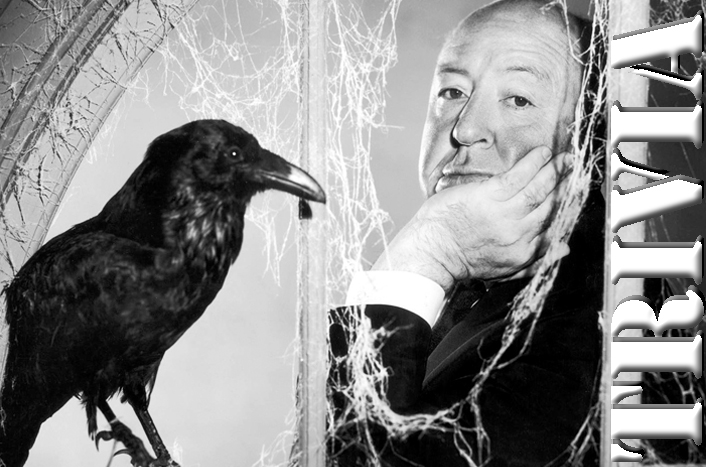
Halloween Holiday Trivia
● Orange and black are Halloween colors because orange is associated with the Fall harvest and black is associated with darkness and death.
● Jack o’ Lanterns originated in Ireland where people placed candles in hollowed-out turnips to keep away spirits and ghosts on the Samhain holiday.
● The ancient Celts thought that spirits and ghosts roamed the countryside on Halloween night. They began wearing masks and costumes to avoid being recognized as human.
● Pumpkins also come in white, blue and green. Great for unique monster carvings!
● Halloween was brought to North America by immigrants from Europe who would celebrate the harvest around a bonfire, share ghost stories, sing, dance and tell fortunes.
● Tootsie Rolls were the first wrapped penny candy in America.
● Chocolate candy bars top the list as the most popular candy for trick-or-treaters with Snickers #1.
● Bobbing for apples is thought to have originated from the roman harvest festival that honors Pamona, the goddess of fruit trees.
● There really are so-called vampire bats, but they're not from Transylvania. They live in Central and South America and feed on the blood of cattle, horses and birds.
● Signs of a werewolf are a unibrow, hair palms, tattoos, and a long middle finger.
● Black cats were once believed to be witch's familiars who protected their powers.
● Many people still believe that gargoyles were created by medieval architects and stone carvers to ward off evil spirits.
● The fear of Halloween is known as Samhainopobia.
A Test for People Who Know Everything
From the Jeopardy Archives Category - “POISONOUS PLANTS” ($600):
“This highly poisonous plant of Europe of the parsley family was used to do in an ancient method man.”
● Answer for People Who Do Not Know Everything, or Want to Verify Their Answer Wikipedia
From the Jeopardy Archives Category - “POISONOUS PLANTS” ($800):
“Lovely to look at, yes, but its bulbs & flowers contain lycorine & other alkaloids, which are toxic to you & your pets.”
● Answer for People Who Do Not Know Everything, or Want to Verify Their Answer Wikipedia
Answer to Last Week's Test
From the Jeopardy Archives Category - “BOOKS BY CHAPTER TITLES” ($400):
“Queequeg in His Coffin”.
Answer: Moby-Dick Shmoop
From the Jeopardy Archives Category - “BOOKS BY CHAPTER TITLES” ($800):
“The Country of the Quadlings”
Answer: The Widard of Oz YouTube

Joke of the Day
From The Blonde Files – Short Flight Time
A Blonde lady called the airline booking agent to ask how long a flight was from Los Angeles to New York?
The busy agent replied, “Just a moment.”
The Blonde replied, “Thank you”, and then hung up.
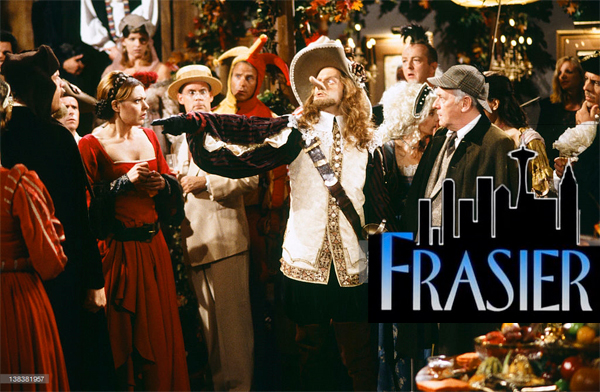
“Frasier” (1993 - 2004)
Frasier Crane: “You know what? Copernicus called and you are NOT the center of the universe!”
Frasier Crane: “Let me tell you a little something about things I don't like: Boxing. Sporting events of any kind. Barbeques. Office parties. Buddy movies. Any dish made with marshmallows. Things that I do like: The opera. The symphony. Elizabethan revenge dramas, et cetera. So if you're no inclined in any of these interests, well, then frankly our association can be civil - at best.”
Frasier Crane: “I'm catnip!”
Dr.Niles Crane: “I’ve waited for this all my life, Frasier – one act of utter, devil-may-care, crotch-grabbing brazenness! And of course I’ll have a nurse on speed-dial in case things get too hairy.”
Dr.Niles Crane: “This country was built by gun toting square dancers.”
Dr.Niles Crane: “ I'm late for a meeting with my multiple personality. Not to worry, if I'm late he can just talk amongst himself.”
~ “Frasier” (1993 - 2004)  Creators: David Angell, Peter Casey, David Lee
Creators: David Angell, Peter Casey, David Lee




























